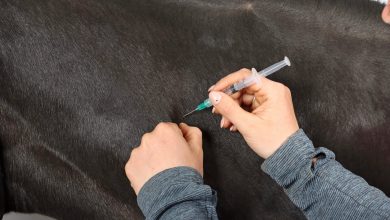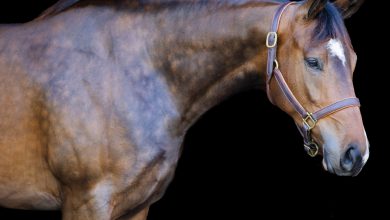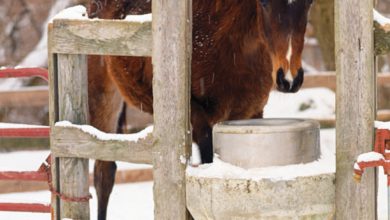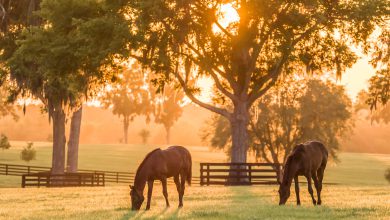Do Hairless Horses Exist?

This post may contain affiliate links. We earn from qualifying purchases. Learn More
Most people are familiar with the peculiar Sphynx cat or the Chinese Crested Dog that only has hair on its head, lower legs, and tail. But while hairlessness is not unheard of in cats and dogs, the same isn’t true for horses.
Hairless horses do exist, but they are the result of a rare genetic mutation. Akhal-Teke horses are more prone to hairlessness than any other breed. However, there is no such thing as a hairless horse breed.
Unlike in some dogs and cats, hairlessness is highly undesirable in horses. Hairless horses generally live very short lives, are more sensitive to weather, and also have a list of health issues.
Below we explore this rare phenomenon in horses and the effect it has on their lives:
Causes of Hairlessness in Horses
Naked Foal Syndrome
A recent study has examined two Akhal-Teke foals that were born with no hair. The scientists identified that both foals were affected by a genetic abnormality that they named “Naked Foal Syndrome” (NFS).
According to the paper, NFS is a heritable skin disease that occurs in the Akhal-Teke horse breed. Foals suffering from the condition have little to no hair and dry, scaly skin.
Unfortunately, both hairless foals in the study died a few weeks to three years after birth. However, the scientists couldn’t link the premature deaths to NFS for certain.
In the study, the researchers performed genome sequencing of the two affected foals, as well as of two carriers and 75 control horses. The team is hoping their findings will help the development of a genetic test to prevent the unintentional breeding of more hairless foals.
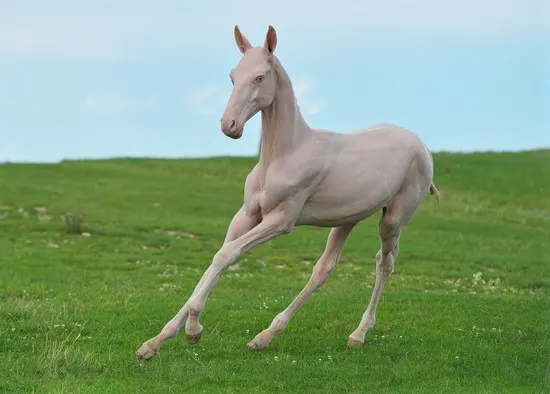
The study was published in the journal “G3: Genes, Genomics Genetics” in 2017.
Hot Weather
Unlike NFS, hot weather won’t turn horses completely hairless. However, there have been instances of horses losing patches of hair on the face or under the mane during hot, dry spells. Luckily, this is only a cosmetic defect and doesn’t cause serious health problems to the horse.
At the end of winter, horses will shed their fluffy coats for a much thinner summer coat. The molting process is also known for leaving some horses hairless in places. However, this state is only temporary and the hair will eventually grow back.
Skin Infections
Skin infections are another cause of hair loss in horses. The culprits here are often parasites such as ringworm. While skin infections mostly cause temporary hair loss, in rare cases it can also be permanent.
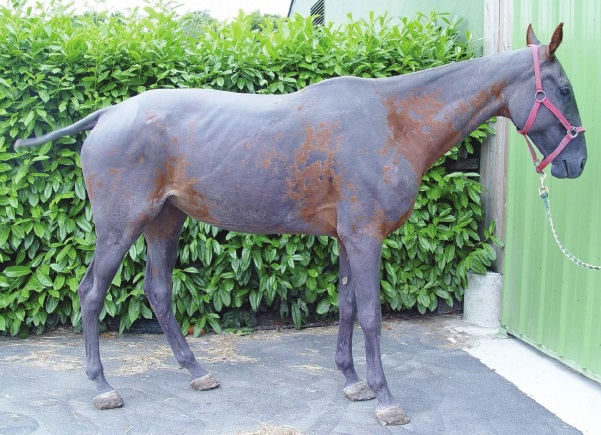
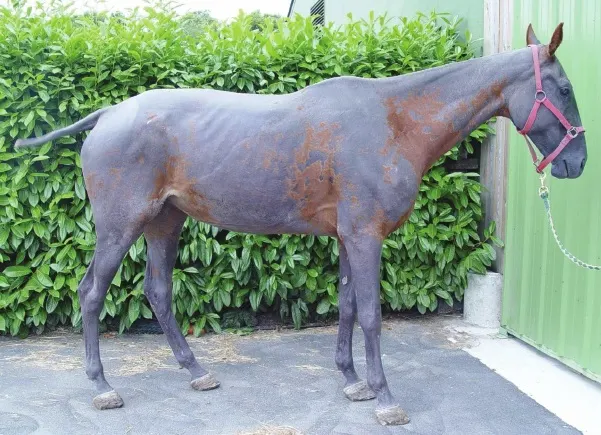
Itching
Itching can become a real problem in the summer, when there is an abundance of biting insects in the horse’s environment. Horse owners will often be faced with hairless patches around the mane and tail, where their horses have been rubbing against the fence or a tree.
While this is an irritating problem for both horses and humans, there are solutions. Equestrian and country stores nowadays have a wide selection of anti-itch and fly-repellent products that will work wonders on horses. Otherwise, fly masks and rugs offer effective protection against biting insects.
Also read: 15 Unique & Rarest Horse Colors
Selenium Toxicity
Selenium toxicity in horses is caused by excessive selenium in the soil and can be dangerous. Long-term selenium toxicity results in the loss of the mane and tail, alongside cracked hooves, lameness, and excess salivation. Severe cases can lead to respiratory failure and death.
Selenium toxicity is one of the reasons why testing the soil and grass on the horse’s field is so important. Owners should send samples to laboratories every time their horses move to a new field to make sure they consume a balanced diet.
Genetics
As already mentioned, certain breeds like the Akhal-Teke are more prone to hairlessness than others. The American Bashkir Cury also has a gene that can cause loss of the mane and tail. In some cases, these horses will also have patches of hairless skin during the summer.


When Was the First Hairless Horse Born?
The first known hairless horse was born in the 19th century. In the 1860s, a merchant called Lashmar was traveling South Africa when he spotted a horse with no hair on its body.
According to Horse Network, Lashmar’s report was one of the first accounts of hairless horses in history. His discovery was published in “Land and Water” magazine in 1868. In the article, Lashmar described the horse as having skin that felt like India-rubber and no hair follicles.
Another famous hairless horse in history was Blue Bell, a draft-type horse nicknamed the “India Rubber-Skinned Horse”. In the past, hairless horses were often exhibited as curiosities to the public.
A more recent case of a hairless horse is from the year 1938. After this occasion, many more hairless horses were discovered throughout the world.
The foals described in the 2017 study about NFS were born in 2014 and 2016. According to the authors, many foals with the syndrome are stillborn or weak born or are not reported to their breed registries. Therefore, there could be a lot more horses carrying the defective genes than we are currently aware of.
Also read: 12 Rare Horse Breeds That Could Go Extinct
Cremello Akhal-Teke Colt Born in March 2014
Born to normal Akhal-Teke parents, this colt had no body hair except for the lower limbs. His mane, tail, and eyelashes were also missing. Although he did have whiskers on his muzzle, these were short, curly, and probably of little use.
With no protective coat, the foal’s body had many scratches and scars. Compared to other young horses of the same age, he had a slow growth rare and was small for his age.
This hairless colt lived to be three years old, which is a relatively long life for a horse with NFS. The researchers also noted the colt had normal teeth and hooves throughout his life.
Filly Born in June 2016
The second hairless horse described in the study was a filly born in June 2016. Similar to the colt above, she had no coat, mane, or tail. Despite serious health issues, her teeth and hooves were also normal.
Sadly, this filly had to be put down after 21 days due to a broken leg. Internal examination revealed many abnormalities, including a heart defect, malformed lymphoid organs, and problems in the thymus, spleen, and lymph nodes.
The scientists couldn’t say for sure if the filly’s health problems were related to NFS. In order to establish a definite link, more hairless foals will need to be examined and data collected about their condition.

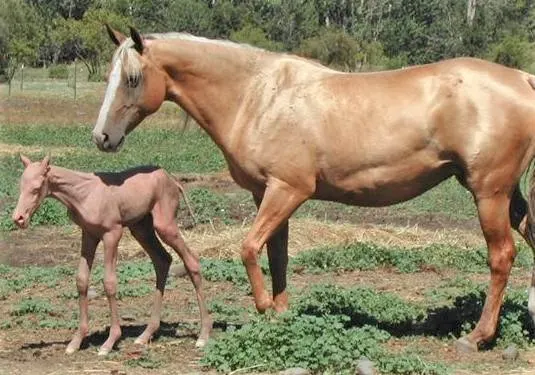
Also read: Do Horses Eat Meat?
Can You Ride a Hairless Horse?
It seems logical to think that a horse’s coat plays an essential role in cushioning the saddle. So what could it be like riding a hairless horse?
While most hairless horses don’t live long enough to be ridden, there have been a few exceptions in the past. In 1871, for example, a report was published in New South Wales that said:
“A hairless horse’s skin is so much like rubber that the saddle – even when well secured by the breastplate and girth, still slips round after a very short time.”
On the other hand, in 1872, a very different report appeared in “The South Australian Advertiser”. This was an account of a famous hairless horse called Caoutchouc, who apparently was “a smart cobby-looking horse, is good in saddle, and carries a lady.”
Caoutchouc’s sales ad even stated that he took part in a steeplechase event and “jumped well” in the race.
How Long Do Hairless Horses Live?
Generally, hairless horses do not tend to live very long. All hairless horses described in scientific literature died between a few weeks to three years of age.
While none of the horses with NFS lived till maturity, scientists of the 2017 study still don’t know whether the condition is lethal.
“It is not fully clear why Naked Foal Syndrome-affected foals have such a short life expectancy,” the team said.
“While none of the known [affected] foals so far became older than three years, there also was huge variability, with some foals dying at a few weeks of age, and others surviving at least for more than two years.” (Source: Horsetalk)
It is logical to assume that a hairless horse is much more vulnerable to the elements. Having no coat makes them susceptible to sunburn and skin inflammation, as well as skin cancer. Problems with the coat have also been linked to digestive problems in horses, which could be another cause of early death.
Harry, The Hairless Percheron Horse


While being hairless is bad news to most horses, there is always one exception. According to a 2010 article, Harry is a hairless Percheron horse who lived well into adulthood without major health problems.
With that being said, Harry’s case is completely unique. He never suffered from NFS and has all of his hair follicles. They just simply don’t work.
No vets or scientists have found a cause for Harry’s condition. His hairlessness started in the womb, and he was born with clumps of hair next to him. Although Harry has a little bit of mane and small patches of hair at places, he is otherwise completely bald.
For most of his life, Harry has been completely healthy, except for minor issues like sunburn, windburn, fungal skin infections, and biting insects. His owner even used to ride him, but stopped when Harry got EPSM, which is common in draft horses. He now lives the quiet life of a companion horse.
Also read: 11 Interesting Facts About Percheron Horses
There Is Now A Genetic Test For Naked Foal Syndrome
Using the results of the 2017 study, an international team of scientists has recently been able to develop a genetic test for NFS.
The previous study has described the syndrome as an “autosomal recessive trait”. This basically means that a horse can carry one copy of the defective gene without being affected. However, when two so-called “carriers” mate, there is a 25% chance that the foal will have the condition.
With the new genetic test, scientists have been able to show whether a horse had zero, one, or two copies of the mutated gene. Using this test that is now available through the UC–Davis laboratory, breeders will be able to avoid breeding NFS foals, improving the welfare of their horses overall.
Also read: 12 Most Beautiful Horse Breeds
